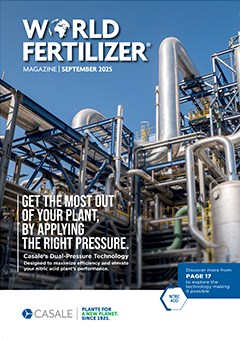Editorial comment
Every country in the world is reliant on chemical fertilizers to optimise their crop yields and boost their agricultural capacity: whether they are to be exported or reserved for domestic use. One country which cannot seem to get enough of chemical fertilizers is India.
Register for free »
Get started now for absolutely FREE, no credit card required.
The Asian sub-continent stands as both a major producer and importer of fertilizers, reflecting the scale and complexity of its agricultural-dependent economy. As one of the largest agrarian nations in the world, the prosperity and food security of India is highly dependent on optimising crop yields through the use of chemical fertilizers. While the nation’s fertilizer production has increased since 2020,1 its appetite for fertilizers remains ravenous. But why does India need so much fertilizer?
As an agrarian country, India is home to numerous small and marginal farmers and its agricultural output is often marred by low productivity and quality. Crops are rain-fed and are repeatedly cultivated on the same strips of land, resulting in a gradual decrease in soil fertility.2 Thus there is a growing need for speciality chemical fertilizers, such as NPK and nitrogen-based fertilizers. More recently these issues were compounded by China – one of India’s largest fertilizer suppliers, responsible for 80% of the nation’s specialty fertilizer imports – imposing restrictions on exports and suspending export permits for DAP in 2023.1 While recently the frosty relations regarding the trade restrictions seem to be thawing, the damage may well have already been done and India will certainly have learned from this episode.
That lesson seems to have already sunk in, as in 2025 India signed offtake agreements with Saudi Arabia and Morocco for DAP, TSP, and NPS fertilizers. Indian importers IPL, Kribhco, and Coromandel have signed an agreement with Saudi Arabia for 3.1 million tpy of phosphates for a five-year period. Meanwhile, six Indian importers have signed an agreement with Moroccan fertilizer producer OCP for the supply of DAP and TSP fertilizers for the remainder of 2025: in addition to India importing 730 000 t of DAP and 285 000 t of TSP from Morocco since the beginning of April 2025.3 Other than diversifying its portfolio of imports (which includes imports from countries including Russia, Saudi Arabia, Oman, and the US) the Indian government has implemented various economic reforms and policies aimed at making fertilizers more affordable and boosting agricultural productivity. Already these have had a substantial impact and will continue to play a key role in driving fertilizer consumption.
To match pace with growing demand India must continue to secure fertilizers from alternative suppliers but ensure that it does not become over reliant on a singular supplier. At the same time the government looks to be continuing its support of domestic fertilizer supplies and it must ensure that supply can indeed still meet demand.
- https://economictimes.indiatimes.com/small-biz/sme-sector/dependent-on-china-drowning-in-red-tape-how-a-broken-policy-regime-is-killing-indias-small-fertiliser-manufacturers/articleshow/122723299.cms?from=mdr
- https://www.statista.com/topics/7488/fertilizer-industry-in-india/#topicOverview
- https://www.argusmedia.com/en/news-and-insights/latest-market-news/2709908-india-signs-phos-agreements-with-saudi-arabia-morocco


